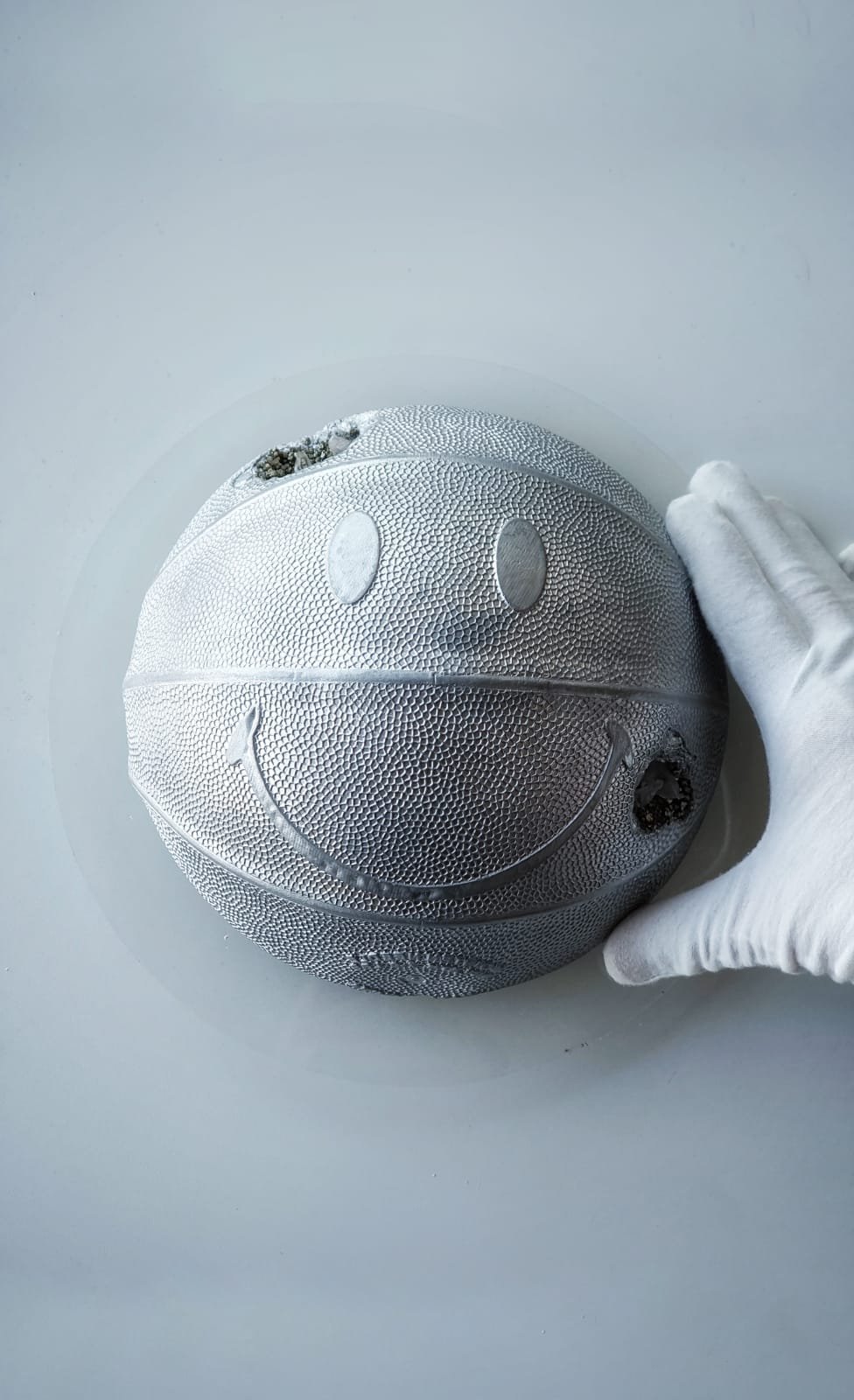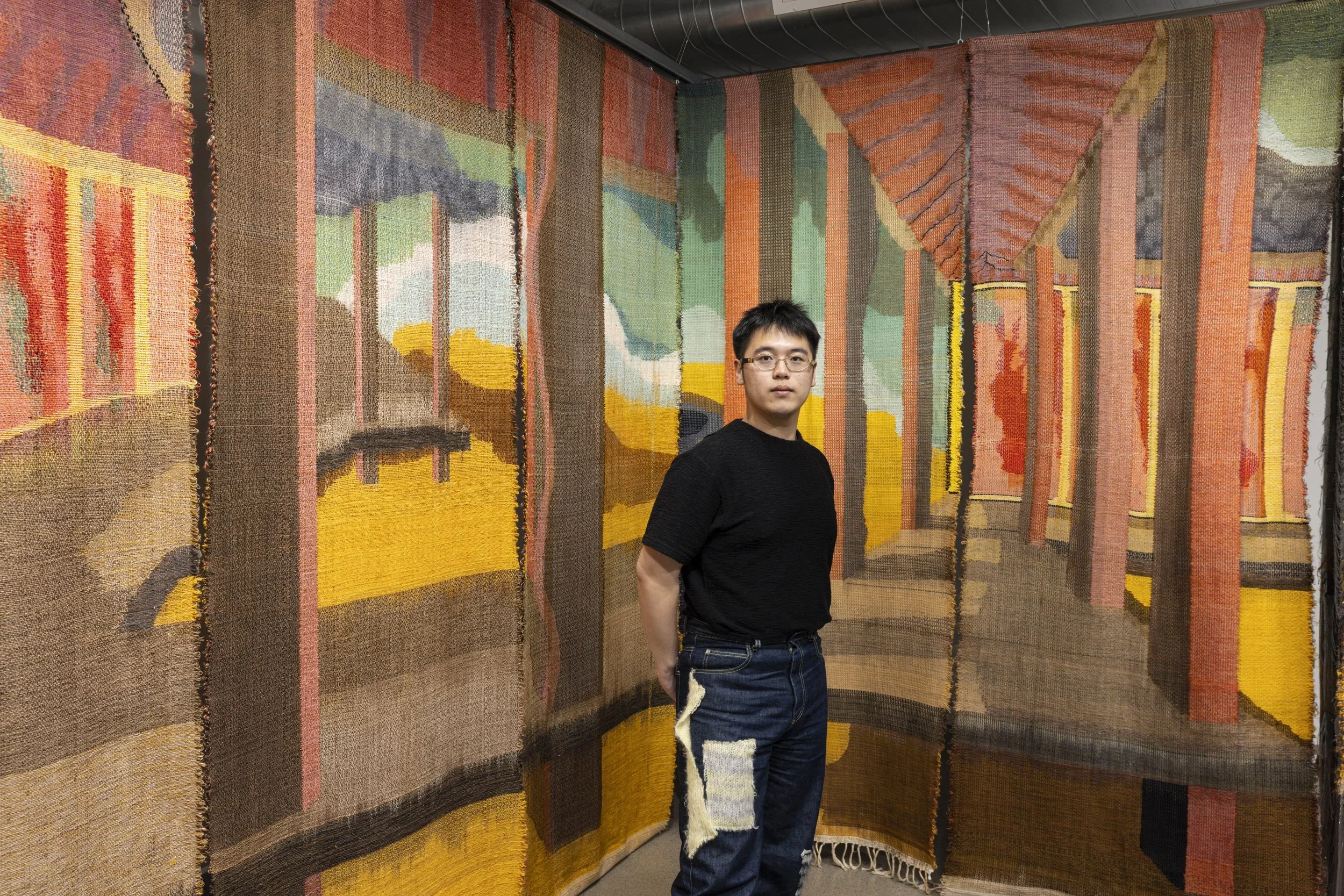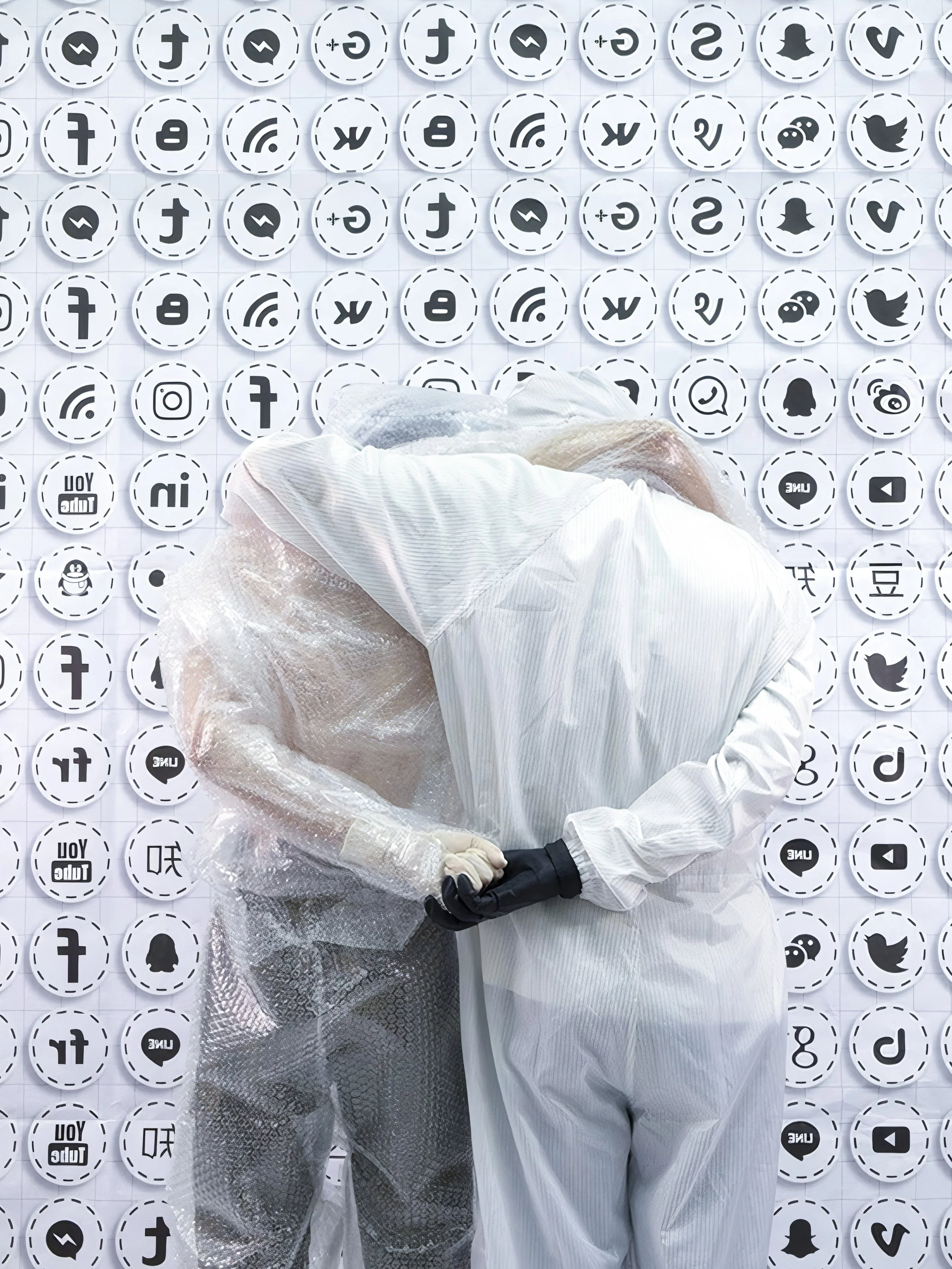10 Questions with Sean Fedelman
Sean Fedelman is a self-taught artist based in Tel Aviv, merging contemporary art, minimalism, and pop culture.
Since childhood, Sean Fedelman has been immersed in visual arts. After earning a bachelor's and master's in advertising and marketing at Ono College, he felt a disconnect from his artistic side. To bridge the gap, he enrolled in graphic design and visual communication at Shenkar College, deepening his understanding of artistic periods and design movements.
Fedelman's work blends modern design with organic forms, using materials like concrete, plaster, porcelain, and plants. He transforms everyday objects into cultural icons, stripping away their mass-produced feel and recreating them by hand. His "personal monuments" turn fleeting consumer trends into lasting artistic statements.
Sean Fedelman's latest series, "City of Gardens," explores nature's resilience amid urbanization. By blending raw concrete with delicate porcelain, he contrasts the harshness of the built world with nature's ability to thrive, showing how life finds a way, even in artificial spaces.
Sean Fedelman - Portrait
His work challenges the boundaries between creation and reality, reinterpreting everyday objects through traditional craftsmanship and modern design. By closely examining their textures, shapes, and how light interacts with them, he reconstructs them into sculptures that shift perspectives. Using materials like concrete and plaster, Fedelman contrasts the fleeting nature of consumer culture with the permanence of raw materials, incorporating bold symbols from pop culture. Rooted in material experimentation, his process redefines cultural icons, connecting them to memory, time, and lasting value.
NY Time Sculpture - Deep in the Roots, concrete, 19.5x12x10 cm, 2023 © Sean Fedelman
INTERVIEW
Let's start from the basics. Your educational background includes degrees in advertising and marketing, as well as studies in graphic design and visual communication. How have these disciplines influenced your approach to art-making and the themes you explore in your work?
It all began with a deep connection to art that goes back to my very roots. Where I come from, in the Middle East, art is woven into the very fabric of life. Pottery, textiles, ceramics, these weren't just materials, they were stories that goes through generations, techniques passed down from father to son. Those early encounters, they lay dormant for a while, waiting for the right moment to resurface. And now, they're at the heart of my creative process. The truth is my artistic journey feels like a delayed homecoming. Fast forward to my academic journey, it equipped me with valuable tools – understanding design and the power of communication. For me, those experiences were like puzzle pieces waiting to click into place. But the core of my creativity thrives on something more personal, something deeper. It's about rediscovering that connection to my heritage, those early influences. I find inspiration all around me. A walk in nature, a quiet moment in a museum, even a song on the radio, anything can spark a new idea. I'm always staying curious, keeping my eyes open to the world. And then comes the experimentation. Pushing boundaries, like combining the raw power of concrete with the delicate textures of porcelain. As I see it, it's a conversation between materials, a way to express the unseen. Art, at its best, speaks a universal language – the bridge between past and future, the ever-evolving relationship between humanity and the very concept of art. It transcends words, cultures, and backgrounds. The materials I choose serve me as collaborators. We work together to translate my vision and create an experience, a story that resonates with people on a universal level.
Basketball Sculptures © Sean Fedelman
How did you get interested in art? And when did you realize you wanted to follow this career path?
Art found me in the most unexpected places. Record covers, full of color and imagery, translating the music into something visual. And then there were the cityscapes, these towering giants adorned with graffiti. The audacity of it all, creating on such a grand scale – it felt almost superhuman. My childhood home was steeped in art. Drawings of houses and buildings for interior design projects in my mother's office, the music of bygone erase. And at the center of it all, my father, an artist himself. He showed me the language of lines and shapes, both through patient guidance and letting me explore on my own. But there was always this echo in the background: "Don't follow my path, son. There's no money in it." So I listened. Chased a stable career, years of studies leading to a certain kind of success. But there was an emptiness that wouldn't go away. A creative yearning that just wouldn't be silenced. Then, one day, a turning point. A decision to break free, to shed the years of meticulous planning and embrace the unknown. It was time to fully commit, to dedicate myself to the exploration of art and to the development of new ways of creating. Looking back, it wasn't just about starting a new career. It was about rediscovering a part of myself, a voice that had been waiting to be heard.
Could you discuss how your exploration of urban elements and organic forms came about, and how it has evolved over time?
It all started with the idea of capturing reality in three dimensions. The urban landscape, that's where I found my first muse. Iconic objects, shapes everyone recognizes – hats, cars, cameras, basketball. Over time, it became an obsession, capturing every detail, every nuance – the textures, the curves, the way light played on the surface. The goal was hyper-realism, blurring the lines between the sculpture and its source of inspiration. It wasn't just about replicating an object; it was about paying homage. Capturing the essence of something familiar, something that holds a place in our collective memory. That was the initial spark, the foundation upon which everything else would grow.
Your work often involves diverse materials such as concrete, plaster, resin, and plants. How do you select and combine these materials to convey specific ideas in your artwork?
All materials tell a story. It's all about creating a conversation, a tension. Take concrete, for example. If you break down this industrial material, heavy, man-made, you will find Elements from nature, all bound together. It's a paradox, nature trapped within the industrial.
And then there's the green side: simple things, quiet growers. Give them a little light, a little water, and they thrive. Resilience in its purest form. That's what fascinates me. The contrast between the cold, hard concrete and this unstoppable life force. You can stick a plant on a cracked wall, and it'll find a way. That's a powerful message. The future holds for transparency. Look at modern architecture, all these open spaces, exposed everything. Privacy's becoming a thing of the past. Materials like resin, they reflect that. See-through, nothing to hide behind. It's a metaphor for our times, laid bare. That's what I'm after in my work, using materials to spark a conversation, to make people think about the world around them in a new light. Materials, they are voices. And when you pick the right ones and put them together the right way, they can tell a great story.
NY Time Sculpture - Oasis, concrete, 19.5x12x10 cm, 2023 © Sean Fedelman
C.M9 Time Sculpture 0 0 4, concrete, 13.7x7.8x8 cm, 2023 © Sean Fedelman
The transformation of everyday objects into cultural icons is a core theme in your practice. How do you approach this process of stripping away mass-produced elements and reimagining them through handcrafted techniques?
A single memory ignites the spark. These everyday objects are like portals to a specific time in my life. Hats, basketballs, and cameras are objects that have been around forever, ingrained in our collective memory. Picking them up is like picking up a piece of history - a worn baseball cap, the one you wore everywhere as a kid, a vintage camera that captured those grainy childhood photos. These objects hold a special energy, a connection to your past.
The challenge is stripping them down, taking away the mass-produced gloss. It's about getting to the essence, the core of what makes that object so iconic. And in that process, I'm not just working with those materials, I'm reliving moments, experiences that shaped our memories. It's like deconstructing a song. You take a familiar melody, something everyone knows, and then you play with it, twist it around. You add texture, layers of emotion. The result might surprise you, but the core, that feeling of recognition, that's still there. That's what I'm after – a fresh perspective on these everyday objects, filtered through the lens of memory and transformed by the handmade process. It wasn't a straight shot, that's for sure. It took persistence, a relentless focus on the process. Dozens of experiments, working with the ratios between materials, willing the sculpture to match that image in my head. And there were failures, things cracking, breaking apart. But that's the beauty of the journey. Every broken sculpture and failed experiment, taught me a lesson, pushed me closer to where I am today. Through the process you understand that it's not about getting it perfect on the first try. It's about investing the hours in trial and error. It's the dedication that takes you from that initial spark of an idea to a place where you truly understand the materials, the process. That's where the magic happens.
In your latest series, "City of Gardens," you utilize "raw concrete castings mixed with delicate porcelain textures" to explore the relationship between nature and urban environments. Can you elaborate on the conceptual underpinnings of this series and how it reflects your artistic philosophy?
The "City of Gardens" series was about finding harmony. Rough concrete, the industrial urban material, is the very essence of the built environment, alongside delicate porcelain flowers blooming on top of it – a beautiful contrast, a push and pull between nature and the city. Urban life thrives on a certain rhythm. But nature has a way of persisting, of finding its way through the industrial life. That's the metaphor. A reminder that even in the heart of the city, nature finds a way to bloom. Everything in life, it's about finding that equilibrium, that's the core of my artistic philosophy. Taking the familiar and transforming it into something new. The textures of those blossoming flowers on the concrete castings, that's where the inspiration came from. A way to bridge the gap, to show that these seemingly opposing forces – the urban and the natural can coexist, can even complement each other.
Utopia Concept © Sean Fedelman
Can you describe your creative process when working with materials like concrete and porcelain? How do you navigate the challenges and possibilities of these mediums to achieve your artistic vision?
The genesis of a project often begins with a material exploration – a fascination with contrasting elements and their potential to interact. What gets me most excited is seeing how these materials transform throughout the creative process, going from raw ingredients to the finished artwork. Early on, the most significant initial hurdle was discovering a harmonious synergy between two such contrasting elements – concrete and porcelain. Both in terms of their feel and how you handle them. Concrete is the very foundation of our built world, symbolizing strength and permanence. On the other hand, porcelain is delicate and precise. Imagine all those hours of hand-drawn details telling stories – people, plants, animals, figures from way back when. In my latest project, "City of Gardens," the marriage of these materials serves as a message of how, in the rush of industrialization, we often overlook the importance of nature. The initial connection with the viewer comes through the concrete castings of recognizable objects like the iconic NY cap, vintage cameras, and basketball. But it's the delicate porcelain blooms erupting from the concrete that deliver the message – nature's enduring resilience in the face of human impact.
As you explore the concept of nature blooming amidst urban landscapes in your "City of Gardens" series, how do you hope viewers will engage with and interpret the intersection of natural and man-made elements in your artworks?
"City of Gardens" is a mirror, reflecting back the world around us, but it can also be a window, opening our eyes to new possibilities. That project is a glimpse into a future, finding a balance, where nature and city life find a way to coexist. That's why I use both materials – the rough concrete and porcelain textures. Nature and the environment, those are massive topics, easy to get lost in the big picture. What I wanted to do was bring it down to earth, make it personal. Art, for me, is a way to communicate ideas that words sometimes can't. It cuts through the noise, bypasses the logical mind, and speaks straight to the gut. At the beginning, we are planting a seed, an idea that grows in the viewer's mind. Once you've got someone curious, they're more likely to engage and think about the bigger picture. Everyone can understand the beauty of a flower or the harshness of concrete. By putting those two things together, "City of Gardens" becomes a conversation starter about the balance between nature and humanity.
Basketball Sculptures © Sean Fedelman
Camera Sculpture © Sean Fedelman
How do you envision the role of your art in sparking conversations about environmentalism, urbanization, and the relationship between humanity and nature in contemporary society?
At its core, I believe art can be a catalyst for change. I strive to shift the mindsets of specific groups by utilizing the very materials they encounter daily. It's about taking the familiar and placing it in a new light, prompting viewers to question their assumptions. The materials themselves hold the key. It's about letting them guide the conversation, by manipulating their essence, reshaping their form, I want to create an engagement that transcends the merely aesthetic. Sometimes, the most critical themes are the ones that seem a bit forgettable. That's where the power of art lies. If we look at our daily life as a set of events, we navigate the world in a constant state of motion. The same sights, the same sounds – they blur together. But art has the power to make us stop, to truly see. To take a second look and, in that moment, perceive the world with fresh eyes.
And lastly, looking ahead, what future projects or themes are you excited to explore in your artistic practice, considering the themes and techniques you've developed in your previous work?
Looking ahead, I'm driven to tackle larger-scale projects and creations of greater complexity. We talked about those childhood memories, seeing graffiti murals on skyscrapers – that kind of scale, that's what excites me. Pushing the boundaries of what's considered possible, creating works that fill a space. Art is a lifelong obsession, a constant process of learning and discovery. New movements, different cultures, that's what leads me to expand my knowledge base. I see myself delving deeper into mixed-media installations, where my paintings intertwine with sculptural elements. Collaboration, too, is exciting. Working with artists from diverse disciplines, creating new dialogues within the art community. Lately, I've found myself drawn deeper into Ancient Greek culture. The myths, the characters – they've always held a certain allure. These days, I'm exploring the art from that period. It's fascinating to see how many of our core concepts, the very fabric of our lives, trace their roots back to that era. "Duality" – that's the name of the series I'm working on now. It delves into the cycle of life - Creation and death. These two seemingly opposing forces, they're intricately linked. Two sides of the same coin. The sculptures in this series represent that duality, the constant between creation and destruction, with life itself pulsating in the space between. Ultimately, my goal is to continuously push the boundaries of my artistic expression, challenging myself and contributing to the ever-evolving conversation of art.
Artist’s Talk
Al-Tiba9 Interviews is a promotional platform for artists to articulate their vision and engage them with our diverse readership through a published art dialogue. The artists are interviewed by Mohamed Benhadj, the founder & curator of Al-Tiba9, to highlight their artistic careers and introduce them to the international contemporary art scene across our vast network of museums, galleries, art professionals, art dealers, collectors, and art lovers across the globe.






















